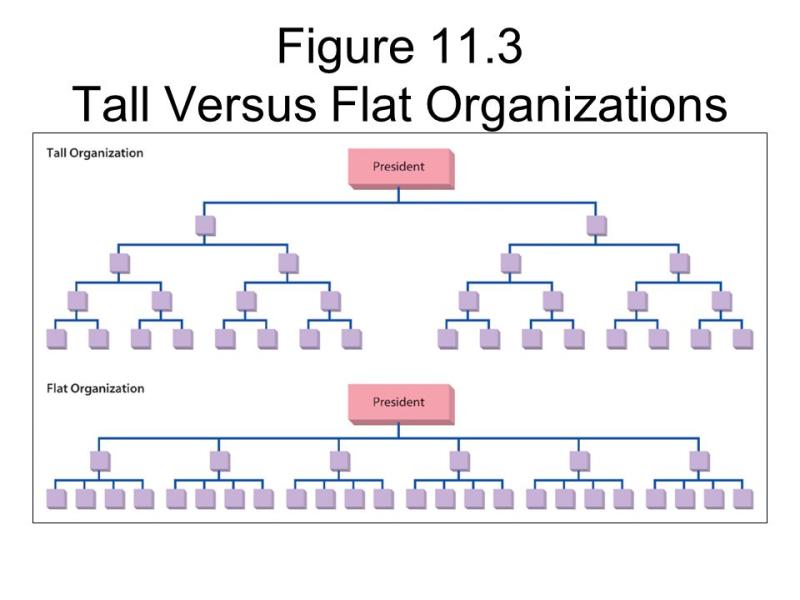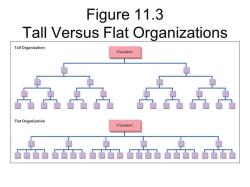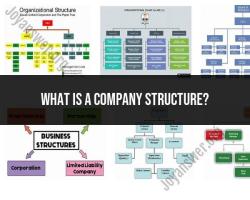What are the basic elements of an organizational structure?
Organizational structure refers to the framework and arrangement of roles, responsibilities, and relationships within an organization. The basic elements of organizational structure provide a foundation for understanding how activities are coordinated and how authority is distributed. Here are the fundamental elements of organizational structure:
Hierarchy:
- Hierarchy defines the levels of authority and decision-making within an organization. It establishes the chain of command, from top-level executives to front-line employees. Higher levels typically have broader decision-making authority and responsibility.
Departmentalization:
- Departmentalization involves grouping individuals with similar skills, tasks, or functions into departments. Common methods of departmentalization include:
- Functional Departmentalization: Grouping based on common functions (e.g., marketing, finance).
- Divisional Departmentalization: Grouping based on products, services, or geographical regions.
- Departmentalization involves grouping individuals with similar skills, tasks, or functions into departments. Common methods of departmentalization include:
Span of Control:
- Span of control refers to the number of subordinates or employees that a manager or supervisor oversees. A wide span of control implies more direct reports, while a narrow span of control involves fewer direct reports.
Chain of Command:
- The chain of command outlines the formal lines of authority and communication within an organization. It clarifies reporting relationships and the flow of information from top management to lower levels.
Centralization vs. Decentralization:
- Centralization involves concentrating decision-making authority at the top levels of the organization, while decentralization involves distributing decision-making to lower levels. The balance between centralization and decentralization depends on the organization's structure and strategy.
Formalization:
- Formalization refers to the extent to which an organization's processes, procedures, and rules are standardized and documented. High formalization implies strict adherence to rules, while low formalization allows for more flexibility.
Matrix Structure:
- In a matrix structure, individuals report to both functional managers and project or product managers. This dual reporting reflects a matrix of responsibilities, allowing for flexibility in project-based organizations.
Flat vs. Tall Structure:
- Organizational height refers to the number of hierarchical levels, while flatness or tallness describes the degree of hierarchy. A flat structure has fewer levels of management, promoting a wider span of control, while a tall structure has more levels.
Line vs. Staff Roles:
- Line roles involve activities that directly contribute to the organization's primary objectives, while staff roles support line roles through specialized functions (e.g., human resources, finance).
Cross-Functional Teams:
- Cross-functional teams include individuals from different functional areas working collaboratively on a specific project or task. This structure promotes communication and coordination across departments.
Organizational Chart:
- An organizational chart visually represents the structure of the organization, showing relationships, reporting lines, and the positions of individuals. It provides a snapshot of the formal structure.
Informal Structure:
- The informal structure represents the relationships and networks that develop among employees outside the formal organizational framework. It includes informal communication channels, friendships, and social interactions.
Job Specialization:
- Job specialization involves breaking down tasks into specific, well-defined roles. Specialization enhances efficiency but may lead to narrow job roles.
Coordination Mechanisms:
- Coordination mechanisms, such as meetings, communication channels, and information systems, facilitate collaboration and ensure that activities align with organizational goals.
Understanding and designing an effective organizational structure involve considering these elements to achieve coordination, efficiency, and clarity in the workplace. Organizational structures can vary widely, and the appropriate structure depends on factors such as organizational size, industry, goals, and external environment.
What fundamental components form the basis of an organizational structure?
Several fundamental components form the basis of an organizational structure. These components work together to create a framework for how work gets done within an organization. Here are the key elements:
1. Job Design:
- This involves defining the specific tasks and responsibilities associated with each position within the organization.
- Job design considers factors like skills, knowledge, workload, and responsibilities to create effective and efficient roles.
2. Departmentalization:
- This involves grouping related jobs together into departments or units based on shared characteristics, such as function, product, or customer.
- Departmentalization helps promote efficiency, collaboration, and expertise within specific areas.
3. Chain of Command:
- This establishes a clear hierarchy of authority and reporting relationships within the organization.
- It defines who reports to whom and ensures clear communication lines for decision-making and accountability.
4. Span of Control:
- This refers to the number of employees reporting directly to a manager or supervisor.
- A balanced span of control ensures managers can effectively manage and support their team members.
5. Centralization vs. Decentralization:
- This spectrum defines the level of decision-making authority within the organization.
- Centralized structures concentrate decision-making at the top levels, while decentralized structures grant more autonomy to lower levels.
6. Formalization:
- This refers to the degree to which rules, procedures, and policies are documented and enforced within the organization.
- Formalization helps ensure consistency and control but can also limit flexibility and innovation.
7. Standardization:
- This involves establishing uniform processes and procedures for performing specific tasks across the organization.
- Standardization promotes efficiency and quality but can stifle creativity and adaptation to changing circumstances.
Additional components:
- Coordination: This refers to the mechanisms and processes used to ensure effective collaboration and communication across different departments and units.
- Information Systems: This includes the technology and tools used to collect, store, analyze, and share information throughout the organization.
- Culture: This encompasses the shared values, beliefs, and assumptions that influence how individuals and teams behave within the organization.
These fundamental components interact and influence each other to create an organization's overall structure. The specific combination and configuration of these elements will vary depending on the size, industry, and strategic goals of the organization.



